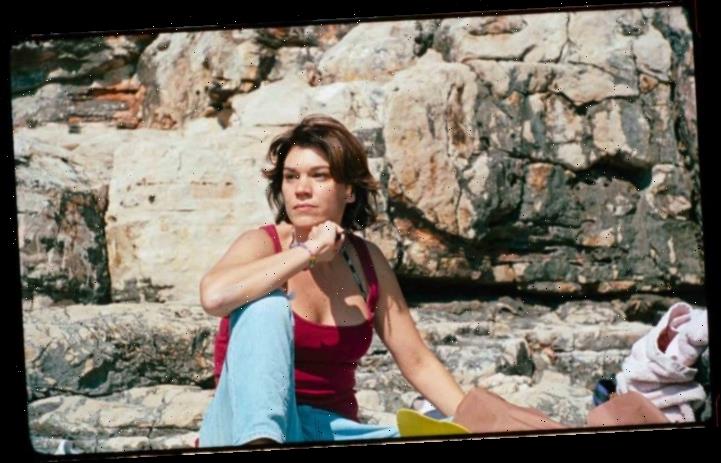Andrea Štaka, who won a Locarno Golden Leopard in 2006 with “Faulein,” unveils her latest film “Mare” in the Panorama section of this year’s Berlin Festival.
Telling the story of a middle age mom, Marija Škaričić (“The Priest’s Children”) and Goran Navojec (“All the Best”) were cast to tell the story of a family in Dubrovnik.
Although Mare, her husband, and their three children live together in their home near the airport, she often feels like something is missing, and a stranger to those around her. When an outsider appears in her life, she will struggle to feel satisfied with what she has already.
Be For Films, the Belgium wing of France’s Playtime, handle sales on the co-production between Okofilm Productions and Dinaridi, co-produced by broadcaster SRF and SRG SSR in Switzerland, ZDF in Germany and ARTE in France. The film received financial backing from a host of public funds in various countries.
Štaka talked with Variety ahead of the film’s Berlin premiere about parenting, shooting on film and her protagonist’s world.
Popular on Variety
This story has a strong female point of view, and we could even say it’s specifically a mother’s point of view. Where did the story originate, and how does it relate to the modern world?
I am a woman and a mother myself! I talk about a phase of life when your raising children, which makes you realize how much you are changing too. Somehow you have all your feelers out. You wonder if you really know the people you live with. Do they hear you? Does your husband love you? Is your life your own? Mare is a personal film. So many women – and, of course, men – still lead their lives as part of a conventional nuclear family but have practically no voice because family structures are changing so much. I feel it’s important to tell stories from a female perspective about family, marriage, the need for independence and questions of sexuality. It’s crucial to me to show that family and independence are not mutually exclusive.
This movie has a strong discourse regarding relationships and how they establish mom’s figure: Mother-father, mother-child etc. How do you see these external relationships impacting her?
Friends, daughters, wives, mothers, lovers, colleagues – whatever the relationship, it is almost always hard to accept or sometimes even provoke change. Mare loves her husband, but they’ve become estranged from one another. It’s normal, it happens. Her kids are becoming independent, yet they need and challenge her. Mare’s husband senses that something is happening, too, but is stuck in his role as the nourisher. They love each other, there is no open conflict and yet…
Mare is ultimately thrown back on herself despite important relationships. In turn, she wants to give her teenage daughter Karmela the strength to love herself, to be independent, the same things Mare is struggling with herself. Her girlfriend Šima is a close friend, but also a mirror of society, at times loving, at times jealous of Mare. Finally, Mare and her mother love each other deeply, yet she is the image of the woman Mare doesn’t want to become.
Did you shoot on digital or film?
We shot on Super 16mm film. My cinematographer Erol Zubcević and I wanted a rough, authentic, straightforward feel to the film. Working with film material makes the actors and the crew concentrate. When I say “action!” it really counts, and afterwards, you must let go and trust that when the dailies come back, they will be as you imagined them. There is a magic to it, something truly creative and exciting. The imperfect, grainy feel of the film stock is closer to our lives than neat, clean images. I like working with ambivalence, the unpredictable, the sensitivity of light (and life). Film has all of that.
There are several scenes at night, or where darkness was involved. Could you talk a bit about the lighting process and how darkness/brightness played their part during the film as an important asset.
Contrast was one of the main devices used to create the cinematic style of “Mare.” Contrast in the characters’ moods; sometimes Mare is earnest, but a minute later she must laugh about herself while her husband is grouchy, but a minute later gentle. The kids need their mom and resist her, already wanting a life of their own. It was the same with the visual language. The sun shining bright and a moment later darkness. We played with natural light, the imperfection and beauty of it. Film material is very resilient. The contrast is also a reflection of Mare’s inner conflict.
Mare feels caged from the camera’s point of view. How did this close-up narrative allow you to show Mare’s feelings and emotions?
The goal was to move with Mare intuitively. We had a visual concept that differentiated between intimate scenes and more public scenes. We had ideas about how to use light, darkness, movement and stillness in certain moments of the story. Within those parameters, the cinematographer moved freely and intuitively through the scenes. Škaričić gave impulses that drew us closer to her, to stay on her face, or on her neck when she’s contemplating the situation herself, hesitant about what to do.
Source: Read Full Article

